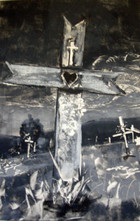Michael Vargas
At age 44, Mike Vargas quit his job as a supermarket manager to pursue a dream he had postponed because of family responsibilities. He got a Fine Arts degree from Highlands University in Las Vegas, New Mexico, found work in a graphics studio—and discovered his true calling in life: saint-making.
Vargas now has his own gallery in the Old County Courthouse in the bustling heart of the trendy art center, Taos, New Mexico. He has garnered several “best of show” prizes in local art fairs and Spanish Markets, and even held a one-man exhibition of holy images, called “Santos on Paper,” at the town’s prestigious Harwood Museum. Not bad for a middle-aged, late-comer to the arts scene.
Although the quiet, unassuming Vargas is reluctant to join the computer age, he is no traditionalist in the way he uses printing techniques or oil paint on handmade paper to expand the bounds of santero (saint-maker) art. Yet, for all his experiments with mixed media, Vargas comes closer than any modern New Mexican sacred artist in capturing the severely simple lines, coloring, brushwork—the real spirit—of 18th-19th century masters like Pedro Antonio Fresquis, Molleno, and Jose Aragon.
Vargas’ expressionistic paintings, drawings, and prints of the Passion of Christ, Our Father, Jesus the Nazarene, and the Stations of the Cross are wonderfully evocative of the penitential art of village moradas, philanthropic lodges of Roman Catholic laymen, who re-enacted scenes from the Crucifixion, often in graphic detail, during the Easter season.
When he was growing up, Mike says, an uncle who was a penitente used to store art work from his morada in the family's back bedroom. The young Vargas was both frightened and fascinated by these holy images of the suffering Christ. It is, certainly, a recurring theme in his art-making.
While working in the print studio, Vargas became skilled in making monotypes, single prints made from drawings on an inked surface. In more recent works like the two altar screens in my collection, Vargas has turned to a brighter color palette, rendering his holy subjects in a stylized, elongated manner, recalling El Greco. This is one saint-maker to watch.
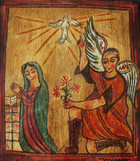
Annunciation

The Flight into Egypt
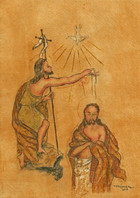
The Baptism of Christ
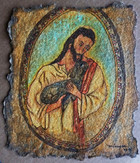
The Good Shepherd
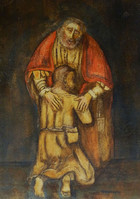
The Return of the Prodigal Son (After Rembrandt) I
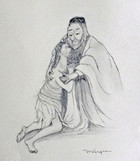
The Return of the Prodigal Son (After Rembrandt) II
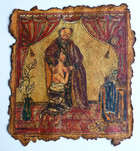
The Return of the Prodigal Son (After Rembrandt) III
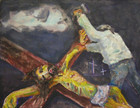
Nailed to the Cross

Ecce Homo
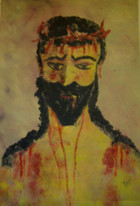
Our Father, Jesus the Nazarene I

Our Father, Jesus the Nazarene II
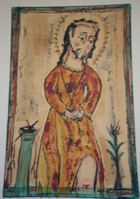
Our Father, Jesus the Nazarene III

Our Father, Jesus the Nazarene IV

Our Father, Jesus the Nazarene V
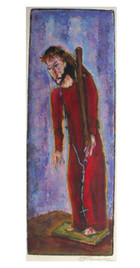
Our Father, Jesus the Nazerene VI
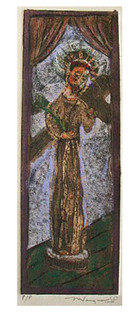
Our Father, Jesus the Nazarene VII

Our Lord of Hardships
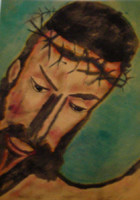
The Penitential Christ
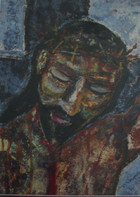
Christ the Merciful
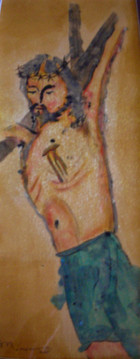
Christ Crucified

The Crucified Christ
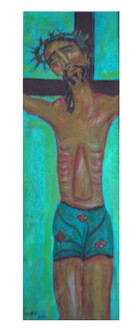
Christ the Merciful
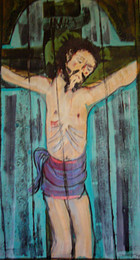
The Crucifixion
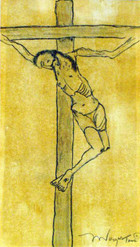
The Crucifixion (Yellow)
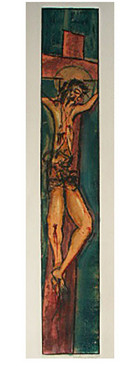
The Crucifixion (Turquoise)
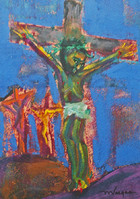
Crucifixion (Green)
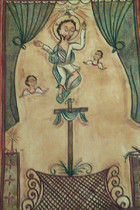
The Resurrection
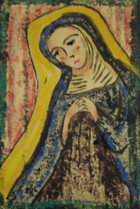
Our Lady of Sorrows
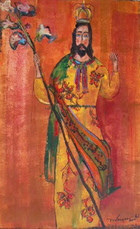
St. Joseph

St. Peter
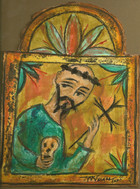
St. Francis (Green)
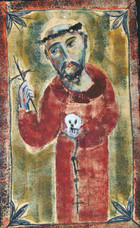
St. Francis (Red)

Penitential St. Francis
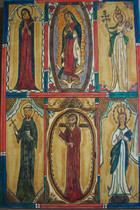
St. Francis Altar Screen

Our Lord of Esquipulas Altar screen
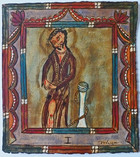
Station I
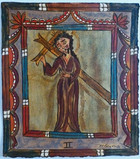
Station II

Station III
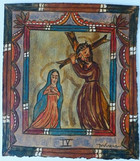
Station IV

Station V

Station VI
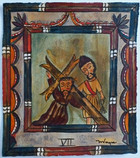
Station VII

Station VIII

Station IX

Station X

Station XI
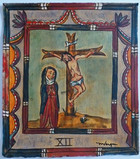
Station XII
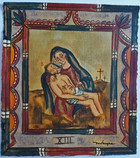
Station XIII
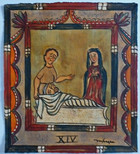
Station XIV
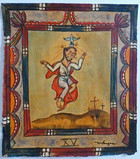
The Resurrection
